Tim Hawken's Blog, page 2
January 5, 2023
Best Cyberpunk Books Ever
I’ve been a little obsessed over the last few years with what the best cyberpunk books are. That’s partly because I was writing my own cyberpunk novel. It’s partly because I simply love the genre. But, what is cyberpunk? Is it simply a techno thriller novel with edge? Isn’t it a video game? Is it similar to LitRPG books? Before we dive into what I think the best cyberpunk books ever are, it’s probably worth stopping for a second to define the genre.
What Is Cyberpunk?Put simply, cyberpunk is a sub genre of science fiction that takes place in a gritty setting but with hi-tech, often with virtual reality as a core element. Cyberpunk also often showcases other distinct features like an interest in Asian culture, swordplay, and cybernetic body modifications. Cyberpunk crosses over with LitRPG books which feature virtual reality roleplaying games as their central focus. However, LitRPG can be more focussed on fantasy elements, which are not typically found in pure cyberpunk. Finally, Cyberpunk with a capital C is the name of a video game/TV franchise, not to be confused with the genre itself.
What Are The Best Cyberpunk Books?In my mind there are three clear GOATs when it comes to discussing the best cyberpunk books. A lot of the time Ready Player One is also mentioned, but I’d personally class that as LitPRG, so will leave it here out with an honourable tip of the VR helmet. I’ll start with the godfather of cyberpunk - William Gibson.
Neuromancer - the most influential cyberpunk novel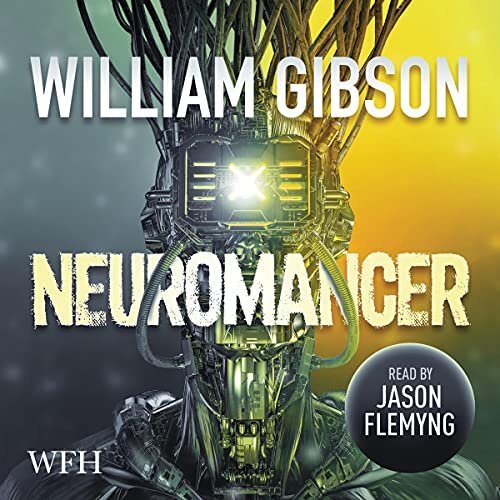
This isn’t even an argument. Neuromancer by William Gibson pretty much spawned the entire cyberpunk movement. While the word cyberpunk was coined by Bruce Sterling, Gibson was the one who cemented it as an actual full-tilt genre. The Matrix took major cues from the book. So did a raft of other novels, short stories and more.
The story of Neuromancer itself centres on Case, a ‘cowboy’ who jacks into cyberspace to thieve, spy and generally be a cyberpunk ratbag. It’s the first book in The Sprawl Trilogy, but can be easy read as a stand alone story.
Check out more on Neuromancer here.
Snow Crash by Neal Stephenson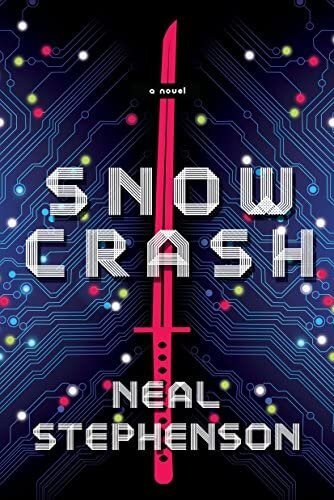
Another epic cyberpunk book is Snow Crash. Written by possibly the greatest living sci fi writer today, it coined the term ‘metaverse’ to explain an interconnected online reality. If that name sounds familiar, Mark Zuckerberg renamed the parent company of Facebook, Meta, in its honour. My personal favourite cyberpunk book, Snow Crash is gritty, fast-faced and packed with incredible ideas. It follows the main character, Hiro Protagonist and skateboard pizza delivery ‘kourier’ Y.T. as they try to shut down the maniac villain Raven (among other things). If there’s just one cyberpunk novel you read from this list, choose this. The audiobook version is an absolute cracker too.
Have a listen here.
Altered Carbon by Richard Morgan
Some of you might be familiar with the Altered Carbon Netflix series. In typical bibliophile form, I’m going to state right now: ‘the book is better’. That’s saying something too. The series is fricking incredible. The story follows convict Takeshi Kovacs who has had his consciousness and skills downloaded into the body of a nicotine-addicted ex-thug and presented with a catch-22 offer - discover who murdered his last body. If that doesn’t hook you I don’t know what will. Easy one of the best cyberpunk books ever. Read it here.
Best New Cyberpunk BooksNow that you know the top cyberpunk novels ever, I have two brand new releases for you. Both are, strangely, by Australians. There must be some chrome in the water here or something. While new, they contain all of the highlights the top cyberpunk books of all time are known for: dystopian undertones, virtual reality madness, hi-tech low lifes and more.
The first cyberpunk new release is an ultra-violent romp through the underbelly of future Vietnam…
36 Streets by T.R. Napper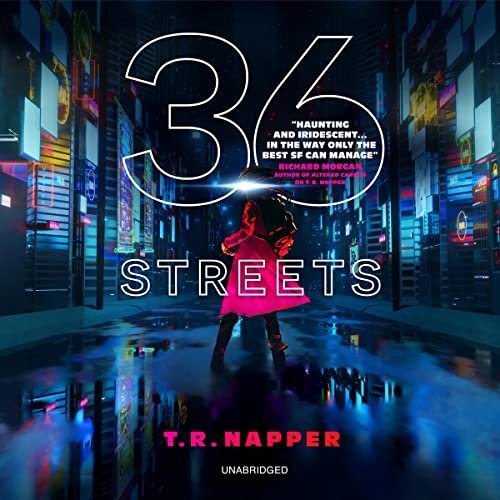
I was recommended this one by a friend who’s into all things tech and it blew my circuits apart. Like Altered Carbon meets Apocalypse Now it is an intelligent, action-driven cyberpunk book that probes questions of memory, identity and the power of narratives. Get your mechanical eyeballs onto 36 Streets here.
Thrill Switch by Tim Hawken
You were waiting for this one weren’t you? Well, I obviously had to end with this one so here it is. My new cyberpunk book Thrill Switch. Rather than rabbit on about it myself, here’s a couple of quotes from 5-star reviews of the work…
“Welcome to the Sci-Fi version of Silence of the Lambs.” - Gordon A. Long
Actor Molly Secours absolutely knocked the narration of this one out of the metaverse, so if you’re after a good cyberpunk audiobook, listen to a free sample here.
November 16, 2022
Thrill Switch Is Out Now
It's a cyberpunk thriller a bit like Ready Player One meets The Silence of the Lambs.
Positive reviews are already coming in. Check out the book and what people are saying about it here: https://www.goodreads.com/book/show/6...
Cheers
Tim
September 20, 2022
How To Create A Book Cover
I’m lucky enough to have been involved in creating my own book covers from my first ever novel. Not many publishers give you this privilege. Now that I’ve leapt into self-publishing my latest books, the initial experience of working with artists, graphic designers and more has come in handy to create book covers that jump out at you. There are a few ways you can go about designing a cover. There’s engaging someone on Fivver to do it for you, which is a really solid option that’s also economical. You can find a professional book designer through local writer’s centres. I prefer a hybrid approach where I engage an artist to create an original work, which I then take to a graphic designer to complete with typography.
Here’s an example video of the process I went through recently with artist Stefan Koidl (and then had a freelancer on Fivver polish with better fonts and logos).
View this post on InstagramBook Cover Art DevelopmentA post shared by Tim Hawken (@tim_hawken)
The video above shows one path to creating a book cover. It’s probably the most common way. The designer/artist sends your a handful of rough concepts. You then pick your favourite to develop in more detail. Then there’s tweaks, font matching and formatting to make sure the book printer can produce it without errors.
Sometimes you have a specific vision for a cover, too. If this is the case, I’ll put together a detailed brief for the designer, show them example images that are close to what I mean and begin with sketching to firm things up before moving forward with the full concept. Here’s a step-by-step process of a variant cover for Thrill Switch that Johan Åberg created.

First sketch to prove the concept. A great spot to make changes if you need them before going into full detail.

Full inks to firm up details and composition.

First colour edit. I liked this but wanted to pop out the background more and make the characters hair and tie red (as per her appearance in the actual book)

Approved colour edit. It might take some time to get here. Don’t be afraid to take your time to get it right.

Adding titles. This can also take time. I went through 3 different layouts with the cover designer before landing on this version.
So there’s a basic run down of how I work to create my own book covers in collaboration with artists and graphic designers.
The Collector’s Edition of Thrill Switch has development sketches and insights in the back matter, showing how all 3 cover variants were created. To get your hands on one, head here.
September 13, 2022
Thrill Switch - Check out this wild cover art!
My latest novel has just launched on Kickstarter!
Titled Thrill Switch, it’s a crazy cyberpunk murder mystery set in near-future Las Vegas.
To do things a little differently, I decided to pre-launch as a crowd funding project with special, limited-edition art prints, hardcovers and more. Here’s peek at each of the cover variants you can get your hands on.
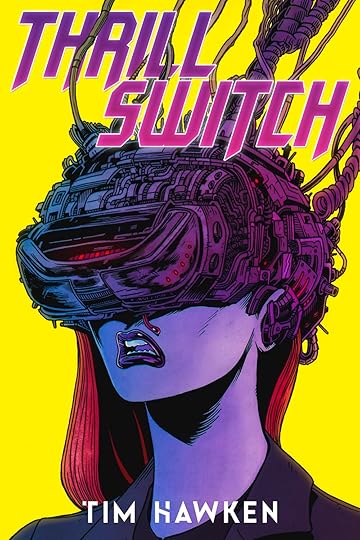
Johan Åberg’s cyberpunk art for Thrill Switch. Check him out on Instagram @cybernosferatu
I’ve been a big fan of Cybernosferatu’s art for quite a while on Instagram. Johan was a true professional to work with, developing an epic cover using a combination of hand drawn and digital art techniques.

The Tom Jilesen cover art for Thrill Switch.
I first came across Tom’s art on the cover of Heavy Metal Magazine—one of my favourite publications anywhere around the world. So sick! I contacted Tom to see if he’d be interested in partnering on the Thrill Switch project and he was all about it. I love this wild art that came out of his mind for it. A great representation of the main character Ada Byron and her relationship with her father’s killer, Jazlin Switch.

Stefan Koidl’s cover art for Thrill Switch
I was lucky enough to partner with Stefan Koidl for some short stories in his art book release on Kickstarter late last year. The results were so amazing that I was itching to work with Stefan again. This cover seems to be the most popular with anyone who sees it, telling a story all on its own.
To get limited art prints, hardcovers and more of Thrill Switch, head to the Kickstarter campaign here. It will be live until October 13th 2022.
August 8, 2021
Corrosion

Corrosion - Lenka Simeckova art
The grey of daily life was stifling for Alex. She felt it press against her mind, like the ugly walls of her cramped apartment. But, Alex had a secret.
A way to escape.
There was an unknown world humming deep below. One that funneled underneath the streets and into a neon place with space. With wonder.
All Alex had to do was take a bath. No normal one, of course. One filled with a cocktail of her own discovery. One she’d at first hoped might kill her, but brought her new life instead.
The first time, she’d cried tears of desperation into the water. Poured vodka. Slung salt. Added acid. She climbed into the bath and watched her body slowly fall apart, then drain away into the nether.
But, when she opened her eyes again, there was no darkness. No grey.
There was music.
There was art.
There were people like her - the forgotten lonely who simply needed the caress of another’s skin.
She danced with them, her people. She kissed. She sensed. She whispered her desires and had them answered with an echoing in her soul.
Alex found connection.
Yet just as suddenly as it started, the music ceased. She was back in her apartment again, whole.
Mostly.
Some pieces of Alex were missing. A mole here, a hair there, a small chunk of skin. Alex didn’t care. She’d filled up new parts of her mind instead. That gift was worth the sacrifice.
So, Alex went back the next night. And the next. She watched as others poured into their shared secret. She welcomed them with her warm embrace. Told them they weren’t alone. Showed them the world she’d come to love.
Alex left more and more of herself behind each time. She returned to her apartment, diminished physically yet more fulfilled than she’d ever been.
The seventh time she went, Alex realised why she had to make that sacrifice. On the walls of her wonderland, there were eyes in the fabric. Mouths sang that stunning music. Alex understood there were ears listening to her fears and taking them away too.
They were the parts of those who had come before her and left themselves behind for others.
More than that, it was their unburdened spirits that lit up the place, giving it its neon glow.
It was then that Alex fully surrendered.
She let her body corrode forever into something beautiful.
Set her soul free to become a full part of this paradise.
Her body had never felt right anyway. It was now a gift to others. Just as theirs was a gift to her, that helped her spirit soar.
Together, they made a place to welcome the lonely.
#
This story was inspired by the incredible art of Lenka Simekova. You can follow her on Instagram here for more dark delights.
August 5, 2021
The Winchester Widow

David Seidman art
The Winchester Widow with art by David Seidman
The gun that won the West saw countless lives lost. Some called it the repeating rifle, others simply the Winchester. Sarah called it Death incarnate. It blasted souls into the underworld during the American Indian War, Japanese invasion of Taiwan, Russo-Turkish War, Boxer Rebellion, Mexican Revolution, both World Wars, and more. Each conflict read aloud sounded like a gunshot bark to Sarah. The sound of men falling. The sound of children caught in the crossfire. The sound of genocide.
Bang. Bang. Bang.
Everytime Sarah closed her eyes, it would echo in her thoughts. Her family had built, sold and shipped Winchesters around the globe and built a fortune in the process. A fortune resting on foundations of blood. So, when the souls of those killed by her family’s gun finally came to haunt Sarah for real, she shouldn’t have been surprised. Yet every ghost shocked Sarah to the core. Every spirit’s whisper was like hot lead tearing through her mind.
She had to be rid of them.
Yet you can’t kill a ghost. No amount of repeating action can keep a soul in the ground. Sarah consulted mystics. She hired psychics. She burnt warding sage by the bushel. Still nothing worked. Until, one day a woman found the answer. Sarah couldn’t dispel these dead, but she could avoid them. If she built a mansion with countless rooms to house those countless souls, they might let her rest. Sarah had money, that was sure. She could build and build using her blood fortune and never run out.
And so, Sarah built.
Ten rooms, twenty rooms, thirty rooms, sprawling out on her estate like fingers reaching in the dark. Sarah stayed in a different room each night to confuse her relentless stalkers. She made up beds on opposite sides of the house, hoping they’d sleep there and forget how they’d died. Sarah created spiderweb windows to catch new souls trying to creep through the walls. Patterns of 13 repeated through the spaces - another trap to disorient the dead.
But still, some made it through.
There was the little girl called Ella, who cried that her little Teddy had been shot through the heart as she hugged it to her own bleeding chest. There was the gentleman barkeep who doffed his cap every time he saw Sarah, revealing the gorey mess of his forehead. There was little Sammy Shadows, who didn’t say much except “why didn’t mumma stop them?”. A question Sarah could never answer.
The worst though, was the Widow.
That ghost looked just like Sarah, staring back from mirrors. She’d killed herself from insanity, after her husband had died in the war. To banish her, Sarah took all the mirrors from upstairs and hid them in the basements. The Widow would always return though, on polished surfaces, stainless steel pots and in the shining blades of knives. In desperation Sarah built ballrooms to see if a dance for the spirits would help give the Widow something else to do. It never, ever worked.
Sarah was driven truly mad.
Servants would watch the real widow walk from room to room at night, screaming at nothing, crying at open doors, hammering her fists against windows, repeating stop, stop, stop. No other person ever saw the ghosts. They all lived in Sarah’s mind. There was no escape if that’s where they were. No way to kill them, unless she blew her brains out. But Sarah refused to give that repeating rifle yet another victim. When Sarah’s heart did finally fail her, she continued to stalk the halls - the only true apparition of Winchester House who brought the rest of the dead to life. The Winchester Widow in her hopeless home. The mother of the fallen.
#
This story was inspired by the epic art of David Seidman and the true story of Winchester House.
To follow David’s amazing work, find him on Instagram here .
August 3, 2021
A Forgotten Love Story
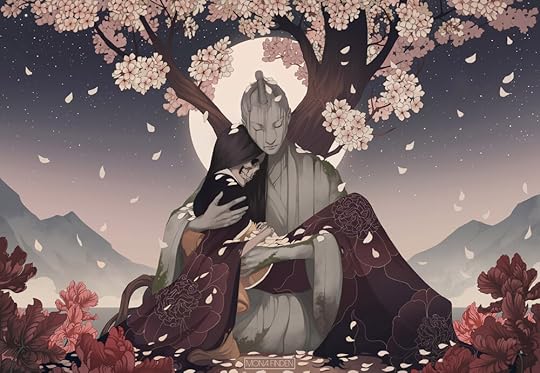
We met in the shade of a cherry blossom tree, before there was such a thing as seasons. It was the same place we would die. The place our love would live forever.
Sen carried a sword that first day. Our valley lived in the shadows of war. I scolded him for bringing a weapon to such a beautiful place. He told me I was naive. That violence doesn’t care what a place looks like, only that it is left unguarded.
I stayed quiet. Looked anywhere but him. Projected cold like the mountain winds.
Sen carried flowers on the second day. He thought their beauty would win me over. I scolded him again. There were enough flowers on the trees to keep me happy. He had killed something without good cause. Sen left without saying anything more.
I sat happily in my peace then. It’s so hard to convince people to leave you alone.
On the third day, Sen brought me tea. His smile was bright like the sun. I told him I wasn’t thirsty. He made me hold the cup anyway, saying my personality needed warming or it would freeze the cherry blossoms. I offered him a nod of thanks.
After, we sat together in silence. I sipped my tea. Felt its warmth. Felt content.
On the fourth day, Sen bought nothing. It was perfect. If only he’d come like that the first time. I offered him my name: Yoshino. We talked of the war. Of possible peace. He shared his warrior dreams. I said I wanted to be an artist. Day faded into night.
Still we talked together. Alone as one. Until, we heard the approach of soldiers.
Their eyes turned cold when they saw us. One beast taunted us for being out at night. Another made lewd jokes about how Sen had no sword. Theirs might please me better. The soldiers didn’t care how beautiful our hope was, only that it was left unguarded.
I stayed quiet. Looked anywhere but them. Projected cold like the mountain winds.
But the soldiers didn’t leave. They circled around our tree. Sen stood at the ready, poised for what might come. I tried to reason with them. Told them that the valley needed families. Our blossoming future was what they were supposed to protect.
We stood in silent fear then. It’s so hard to convince people to leave you alone.
The ringing of steel broke the silence. Sen shouted for them to go. The rage of battle shouted back. Sen grappled with one soldier. Another moved behind him. I leapt in as a shield. Burning heat pierced my stomach. The soldiers saw what they’d done and ran.
Sen pulled me to him. Our first embrace. I smiled at the heat, as cold claimed my body.
Sen held me close and wept. He apologized for not protecting me. Yet, I was glad I could protect him. Now he could continue his warrior dreams. Still, he held me. Told me he’d never leave me. As I died, Sen’s heart turned to stone, his body along with it.
Even now, we embrace under the cherry blossom tree. Our love story has been forgotten by people but is remembered by the valley. Remembered by the tree.
The blossoms fall in Sen’s tears place, then bloom again like our love.
Summer heat remembers the battle.
Cold mountain winds howl at my death.
The seasons of Yoshino and Sen.
__
This story was inspired by the wonderful art of Mona Finden.
August 2, 2021
The Keeper Of Kelp Island

Art by Stefan Koidl
It’s amazing what you can catch in the sea these days. What kind of creatures lurk below. Mia had heard stories about all kinds from her grandad. Goblin Sharks. Colossal Squid. The Viperfish.
Yet nothing could explain the recent attacks.
Boats in once-safe waters were being ravaged by an unknown predator. They were found days after disappearing, spat inland. Crew gone. All fishing equipment torn to shreds.
The fear it caused grounded all but the hardiest sailors.
But, Mia knew what was happening. She knew why too. Had seen the beast one night when granddad was late back from fishing.
No one would believe Mia, of course. Her warnings were passed off as the over-active imagination of a child. The explanation was just too outlandish.
Fed up, she hatched a plan to catch the creature herself. Expose it for the whole world to see. Then the adults would have to listen.
Mia snuck out one afternoon, hiding granddad’s old camera in her bucket and spade. If someone caught her, she’d just say she wanted to build sandcastles while the tide was low.
She waited on the shore, watched, built castles to pass the time.
Nothing happened. The creature didn’t appear.
The next afternoon was the same. And the next.
Mia soon realised it must be because no one was brave enough to go fishing on those days. Everything was docked inshore.
Weeks passed. Mia listened to the news. No attacks. Still no one was fishing. Mia should have been relieved. Should have been happy that no lives were being lost. Yet, a tiny part of her wished they’d go out again. She wanted to be proven right.
It wasn’t long until Mia got her wish.
The adults had been losing too much money without their catch. It was bad enough that in recent years their nets only came in half full at best. This would break them. They reasoned that whatever monster had lurked around the waters of Kelp Island would have moved on by now.
Mia knew better.
She went out again. Bucket. Spade. Camera. Knew the thing probably wouldn’t come out until twilight, when the seasonal fog fell.
The sun faded. Cold gripped the shore. Mia’s skin prickled. She should have worn more than her swimmers. But, she was patient, determined. Wouldn’t be put off by something as little as cold. Mia knew her parents would be getting worried by now. She’d missed dinner with granddad.
Time ticked on. One hour. Two. Three. Mia shivered on the shore, camera ready.
Then, a shout. Mia stood straight, straining her ears. She looked and saw a light winking in the fog.
This was it. The monster.
The adults didn’t understand that the thing wasn’t in the waters around Kelp Island. It was Kelp Island - a colossal and ancient thing that harvested the sea around it when hungry. The lighthouses the adults had built out there to keep boats safe were like barnacles on its back.
And, that light was moving now, swaying through the night.
Mia stood, holding up her camera. She pointed it toward the light. Hoped the flash would be enough to catch the beast on film as it closed in on the shore. No, not closing in on the shore. It was on the shore already.
Mia stumbled back, fell in the sand, watching with horror as the light got closer.
But the shimmer in the mist wasn’t the monster. It was her granddad with his torch. He’d come to find her on the beach, concerned about where she was.
Relief and disappointment flooded Mia. No! She’d missed her chance.
Her granddad hugged her gently but scolded her hard. She shouldn’t be out at night so close to shore when danger lurked in the sea.
He didn’t listen when she explained she was safe because she didn’t fish. That the thing was attacking the boats because they were stealing its food. That’s why it destroyed all their fishing gear. It was sending a message. A message no one but her understood.
Granddad just patted Mia’s shoulder as they walked. He listened but didn’t hear. Didn’t repeat what she’d said to the other elders.
No one believed her the next day either when the latest boat was found ravaged on the sand, nets shredded.
Just the over-active imagination of a child.
They’d soon all learn that ignoring children would be their ultimate undoing. It would be their ultimate end.
#
This story was inspired by the art of Stefan Koidl. For more of his art, follow him on Instagram here .
July 23, 2021
What Makes Good Horror?

What Makes Good Horror? —Photo by Edilson Borges on Unsplash
I used to think horror was like art or porn – you knew it when you saw it. Helping to judge the Australian Shadow Awards this year changed that. While the other panel members and I were provided with some existing criteria to judge by, we nevertheless found ourselves debating whether some entries were ‘horror enough’ to be considered for the award. Were some simply fantasy fiction with dark elements, or YA with a little bit of bite? This was even before we’d discussed whether the books were actually any good or not. I’m confident we got the short list and eventual winner right in the end, since Kaaron Warren’s Tide of Stone also won the Aurealis award for best horror novel. However, since then, the same nagging question has been festering in my grey matter. What makes good horror? To silence those devils, I decided to dig into the crypts and actually research a proper answer. This article is a distillation of what I’ve found, with some additional thoughts of my own. First, I tackle what ‘horror’ is in the first place and then discuss what makes it ‘good’.
Obviously, horror is something that scares you. However, there has to be something more to it than that. We might be tempted to add that horror is anything with a monster in it. Dracula, Frankenstein, The Wolfman. Yet, there are plenty of stories out there with monsters that you’d hardly class as horror – Twilight to name just one. On the flip side of that, there are plenty of scary stories that exist without the need for a monster at all. Most body horror lacks a defined external threat, opting for the metaphorical terror of our own vessels as enemy instead. Does horror need to have a supernatural element in it then? The Shining. The Haunting of Hill House. The Exorcist. They’re all horror. But, what about Wolf Creek? That doesn’t have a ghost or ghoul in sight. Maybe instead of supernatural elements, you need blood and gore? Hello Saw. Yet, plenty of cosmic horror avoids gore and is all the scarier for it. It seems any additional element beyond ‘horror is scary’ just throws up counter examples that disprove the rule.
Some might say simply then, that horror is any piece of writing or film intended to frighten you. However, many advertisements these days are intended to scare and, despite their toe-curling awfulness, can’t be classified as horror. Documentaries like Before The Flood also fall into this ‘scary but not horror’ bucket.
Literary historian J. A. Cuddon defined the horror story as "a piece of fiction in prose of variable length... which shocks, or even frightens the reader, or perhaps induces a feeling of repulsion or loathing". The first key part in that definition is ‘fiction’. It takes out the ads and documentaries that are meant to scare, but certainly aren’t horror. The words ‘repulsion’ and ‘loathing’ are getting to the heart of how horror makes us feel as well. While adding subjective feelings to an objective definition seems to be problematic, I think this does have a lot of merit. We’ll get back to this later. First, it’s worth exploring how horror does make us feel, and what kinds of fear you might experience during something true to the genre of Horror.
Gothic novelist Ann Radcliffe published an essay way back in 1826 defining two elements of horror fiction as ‘terror’ and ‘horror’. She said terror is that sense of building dread you feel before something happens. Horror is the disgust you feel after the deed is done. Orson Scott Card expands on this definition in his essay Maps on a Mirror. He explains:
“Dread is the first and strongest of the three kinds of fear. It is that tension, that waiting that comes when you know there is something to fear but you have not yet identified what it is.”
“Terror only comes when you see the thing you're afraid of.”
“Horror is the weakest of all. After the fearful thing has happened, you see its remainder, its relics.”
Card does have a point on the first two. However, I think he is dead wrong in saying horror is the weakest form of fear (I think he’s dead wrong about many other things too, but that’s another essay). A true sense of horror lingers long after a traumatic event. It’s something that sticks with us, both in our minds and hearts. Horror is something that can circle back into dread, then terror again. The best horror mimics this loop, sending us through the spin cycle again and again, until we emerge out the other side exhausted yet strangely satisfied.
Another element that needs to be added to dread, terror and fear is the sense of revulsion we often feel in horror. Stephen King refers to this as the ‘gross-out’ in his book on horror, Danse Macabre:
“…when Regan vomits in the priest's face or masturbates with a crucifix in The Exorcist, or when the raw looking, terribly inside-out monster in John Frankenheimer's Prophecy crunches off the helicopter pilot's head like a Tootsie-Pop. The gross-out can be done with varying degrees of artistic finesse, but it's always there.”
We should also add ‘the creeps’ to this discussion (further mentioned in Danse Macabre). It is separate to revulsion in that it has an anticipatory element to it. The creeps are to dread as repulsion is to terror. We get the creeps when we sense something gross is about to happen, we feel revulsion when it does. There is also the aftermath of shock that is the cousin to the lingering effects of horror too. So, each stage of fear has its accompanying feeling to further signal the phase we’re in: Dread (the creeps), Terror (revulsion), Horror (shock). These feelings all give us an added clue when we’re experiencing good horror, and give writers a bullseye to aim for when they’re trying to create it.
Now that we have an idea of what horror is and what it isn’t, it’s time to consider what makes something in the genre ‘good’. There have to be the standard things like solid writing, interesting plot, and characters you’re invested in before they get the axe to the throat. Throw these foundations of any good fiction out and you’re bound to have something that lands flat.
Good horror also plays on our fears in an impactful way. It dials them up to ten and then dials it up some more. Because fear is subjective, good horror has to dig deep into our primal phobias to frighten a broad audience. It needs to delve into our universal fears of pain, loss, seeing loved ones suffer, feeling trapped, being hunted, being forced to do something we don’t want to do. Pick one and present it in a convincing way we haven’t seen before, and you’ll likely have people hiding under the edges of their seats. Combine a few together and you create a massive beast of terror we can’t escape from. Bad horror does this in heavy-handed or cliché ways. It relies on ‘jump scares’ when you’re shocked for a second, but come down quickly when you realise it was just a black cat popping out from behind a tree. Because we’ve been exposed to so much horror these days, we need a sense of newness to achieve proper terror. A regular show of needles going into eyeballs doesn’t pierce the psyche of devout fans any more. Rather, we want to pick our way through a carnival ride of bloody syringes. In that way, good horror is somewhat of a moving target. Just think, if Dracula came out today, it would be classified as gothic romance rather than horror. It wouldn’t strike fear into our hearts, because we’ve already had that stake rammed through it too many times. Creators don’t need to fully reinvent the wheel every time. A unique take on an age-old story can be just as great as something completely different at its core. House of Leaves by Mark Z. Danielewski is one example of a haunted house tale that feels fresh and gut-wrenchingly scary.
A big part of keeping horror on the sharp edge of fear is exploring our sense of the unknown too. This trump card can be pulled out to make our own imaginations do the heavy lifting in the story. Set up a scenario where we need to fill in the dark spaces, and we often come up with something truly frightening. Of course, this works well for the ‘dread’ phase of fear, but at some point we have to move on from that to terror. When you show the monster, it had better also be part of the unknown – something we’re yet to encounter and find hard to fathom in its awfulness. If you do that, you deliver a paralysing, uncomprehending terror through the height of the scare, then keep a lingering sense of horror going as we try to compute what we just witnessed. It’s this element of the unknown that is the hardest to pull off. In a world where we’ve been exposed to thousands of stories, finding a way to innovate them is difficult. That, I think, is the special sauce in good horror. Finding a way to push the boundaries of the unknown, while grounding fear in a sense of realism. There has to be a balance. Too fanciful and it just doesn’t have the personal impact it needs to. Too familiar and it also lacks punch. Good horror sits at that intersection, taking us through unchartered byways that still feel like they could exist in our own universe.
So, horror is fiction that takes us through the three main stages of fear – dread, terror and horror. In each of these phases we experience other primal, physical reactions. Creepy tingles on our skin, gut-sickening revulsion, muscle-paralysing fright, and mind-numbing shock. Good horror draws on our deep-seated fears to achieve this. It then exploits our phobia of the unknown to tip us into the abyss. Good horror also feels real. Possible. It lets us put ourselves in the driver’s seat and makes it seem like these horrible things could happen to us – somewhere, somehow. Rounded characters, thoughtful details, and great prose all go a long way to achieve this sense of realism. However, it’s more in finding a balance between keeping one foot in the world we understand and plunging the rest of our souls into a place we do not. In finding that balance we find good horror. It is something that will always be morphing in how it presents, but will always have these fundamental elements to it. Good horror is a feeling within. Fear that goes beyond subjective and into the universal, wherever people dare to look into the darkness. I hope you find yourself inside that entertaining nightmare sometime soon.
This article first appeared in Aurealis Magazine (issue #128, March 4, 2020) and was a finalist for the Best Non-Fiction Category in the 2020 Shadow Awards.
May 31, 2021
The Best Place To Start Reading Neil Gaiman

As a massive Neil Gaiman fan, I often get asked by friends where they should start reading his work. Because there’s so much to choose from, there’s no easy answer. Some people say read Neil Gaiman by publishing date. Some say start with his most popular work (Good Omens or American Gods) and go from there. I say, where to start reading Neil Gaiman depends on other stuff you like to read. In short, what kind of reader are you? Do you like comics or short stories or fun novels or thought-provoking pieces? Are you a kid, or kid at heart, and want to dive in? To help tease out the mystery, here’s a rundown of 8 starting places for Neil Gaiman’s work. Your path after that is up to you…
The Neil Gaiman Reader - For those who like short stories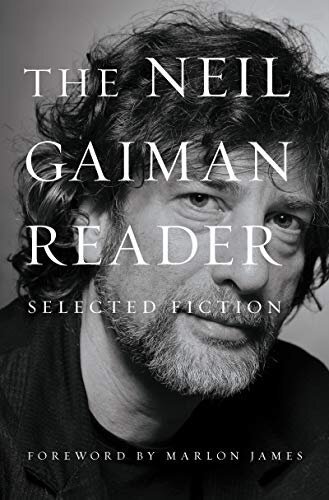
The Neil Gaiman Reader is a collection of Gaiman’s best short stories as chosen by his readers. Simple. I like this book as a first place to start reading Neil Gaiman, because short stories don’t take a huge investment. You can dive in and out. You can read a few, go to something else and then come back without losing anything. With this being a smattering of his most popular short fiction over the years, it feels like a no-brainer as a start point for those who enjoy faster reads. It’s never the first book to pop up on Gaiman searches though, so, to make it easy, you can find it here.
Good Omens - For Terry Pratchett fans and those who like a funner read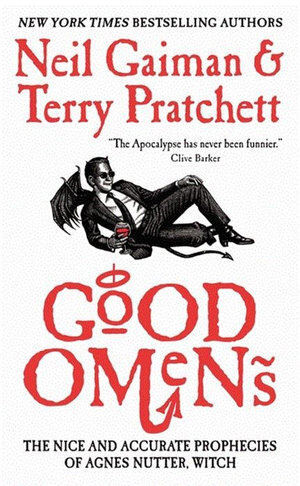
Some of Neil Gaiman’s work can be pretty dark. Not Good Omens. While it deals with heavier themes (the end of times), it’s packed full of wicked humour. Neil wrote this in conjunction with famous fantasy author Terry Pratchett, introducing a generation to the younger writer, and Gaiman fans to Terry. It still holds up to this day. If you want to make it even easier, the TV adaptation on Amazon TV is a classic, written and produced by Gaiman himself.
American Gods - For those who want to first read Neil Gaiman’s most celebrated work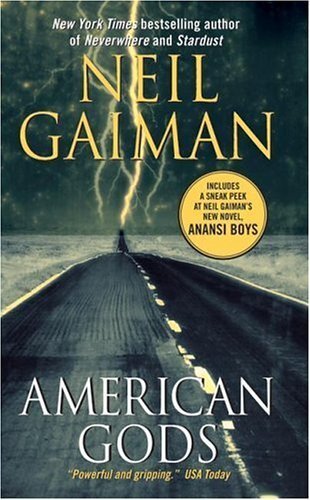
I’d class American Gods as Neil Gaiman’s ‘best’ book. A lot of award-givers agree. It won the Locus, the Hugo and the Nebula awards all in the same year. However, while I’d say ‘best’, it isn’t an easy read. If you want something that’s sprawling, through-provoking and more than a little weird, then start here. But, if you want to ease into Neil Gaiman from an easier path, then go the short stories, or maybe even the very next suggestion.
Neverwhere - Dark fantasy that won’t scare you witless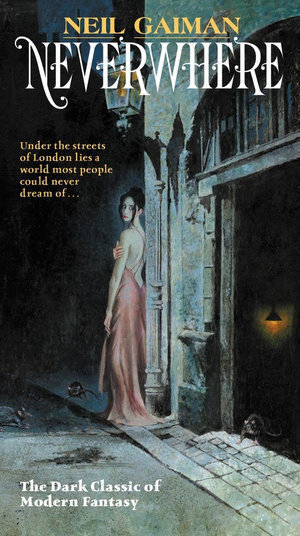
Neverwhere is best described as a bridge between Good Omens and American Gods. It still has a good bout of humour, but has some really thought-provoking ideas and situations in there. It’s also quirky as hell. This is the book I most recommend for my friends to start with, mostly because it’s the most similar to my own work in Hellbound. If you’d like a guide to other good dark fantasy, head here. Or, get stuck into Neverwhere right away. A great starting point Neil Gaiman fans often point to.
The Graveyard Book - A younger Neil Gaiman read that adults still love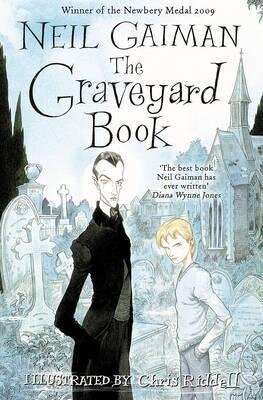
Podcast overlord Tim Ferriss famously recommends The Graveyard Book as the best audiobook he’s ever listened to. It’s damn good too. Neil Gaiman narrates it with his silky voice and English accent. The book itself is more of a middle grade to YA title, so is a great place for young people to start reading Neil Gaiman. Adults will love it too. You can listen to an audiobook sample of the start here if you’re interested.
Coraline - For goth kids and parents with buttons for eyes
Neil Gaiman was told that this horror book for kids was unpublishable when he first wrote it. Too dark. Too scary. Too weird. Are you kidding? That’s what makes it amazing. Since it (eventually) came out, kids and adults around the world cite it as a work that helped them through tough times, and something they’ll always remember as being pivotal to their lives. It has had that much impact. Coraline is a wonderful place for brave kids to start reading Neil Gaiman.
Sandman - For comic book readers, or lit freaks who also love art.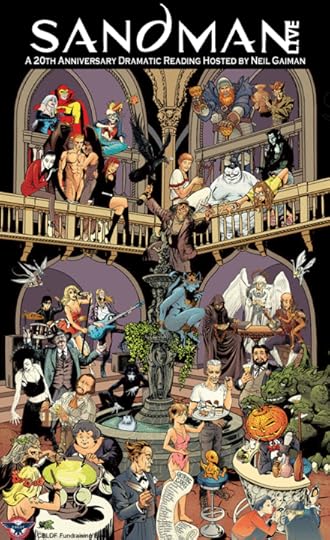
The story that kick-started Neil Gaiman’s career. Sandman is a twisted work of a fabulous mind. The art, arcs and ideas all make it a classic. This comic has been so influential, it is about to be made into a Netflix series too. Look out for the flipping of tropes, like making Death a teenage girl, and the flipping of worlds, from reality to dreamscapes and back. For those wanting the full experience, this Box Set is a must-have.
The Ocean At The End of The Lane - literary horror for parents.
Revisit your childhood nightmares in The Ocean at the End of the Lane. This book is great for adults who like a more literary read with a healthy dose of darkness. This is a nostalgic book, loosely based on Neil Gaiman’s own childhood. In his own words “It's a book about family, it's a book about being 7 in a world of people who are bigger than you, and more dangerous, and stepping into territory that you don't entirely understand.” A great feeling for parents to be reminded of sometimes, so, for me, a great place for parents to start reading Neil Gaiman (to themselves, not their kids). To find The Ocean at the end of the Lane, head here.
If you love Neil Gaiman, you may enjoy the Hellbound Trilogy. To get the first book in the series free delivered to your inbox, simply sign up here .



